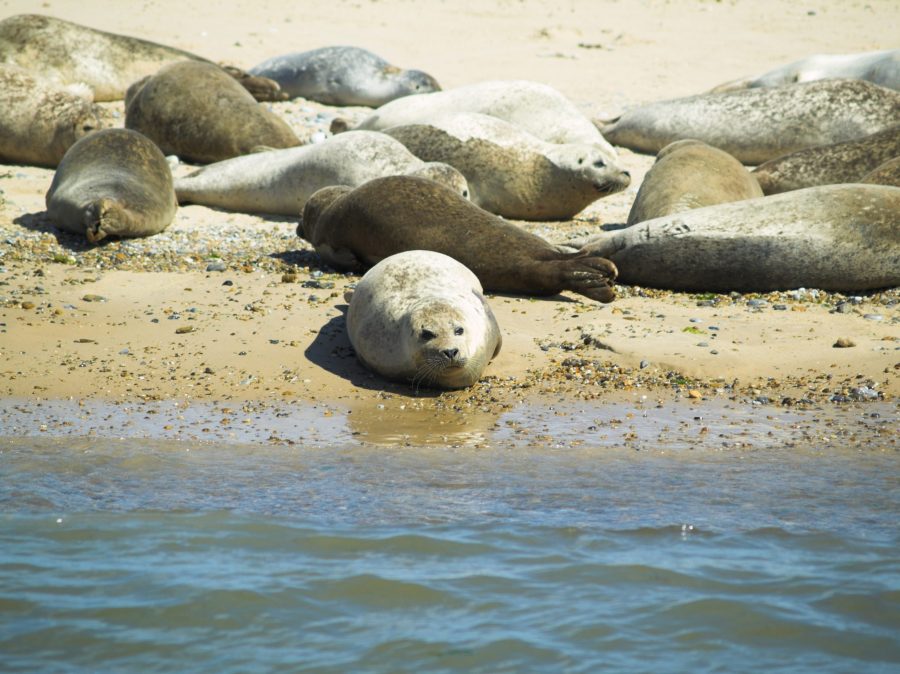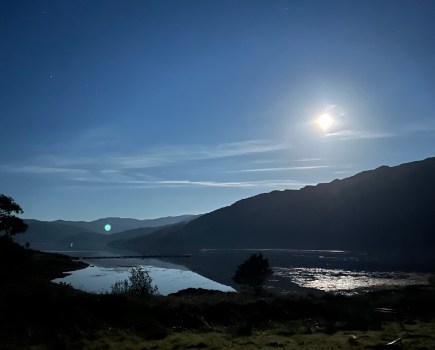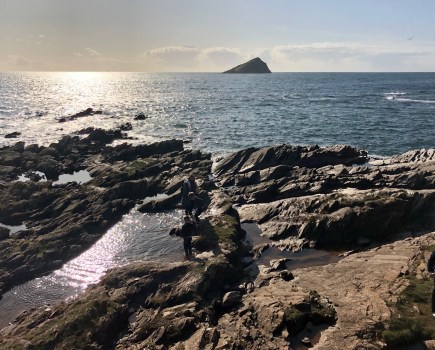As well as stunning coastlines and beautiful vistas, the UK also has a verifiable selection of flora and fauna to enjoy. Mary Vere Parr offers an insight into the best beaches to see everything from seals to sea lavender.
For seal spotting
Blakeney Point, Norfolk
‘See the seals or your money back!’ guarantees one boat company that takes tourists out on this sand and shingle spit. Some 500 common and grey seals haul out onto the sandbanks at the far end of the Point. Numbers peak in August and you may even see a few common seal pups. Some boat trips land on the Point.
Visit the Old Lifeboat House, now a National Trust Information Centre (0844 800 1895, nationaltrust.org.uk).
For sea lavender
Saltfleetby-Theddlethorpe Dunes, Lincolnshire
From July to late October, the saltmarsh on the northern end of this five-mile coastal reserve is a purple haze of sea lavender. Also known as marsh rosemary, the flower can be grown and dried for use in winter bouquets.
Natural England organises guided walks: the Paradise Trail takes in the saltmarshes (01507 526667, lincstrust.org.uk).
For eagles
Laggan Sands, Lochbuie, Isle of Mull
Dubbed ‘Eagle Island’ by birdwatchers, Mull is one of the best places to spot golden and white-tailed sea eagles. The largest raptor in Northern Europe (a third bigger than the golden-headed and dark-tailed golden eagle), the white-tailed sea eagle has a pale head, a white wedge-shaped tail and an immense pair of wings. More of a coastal hunting species than the golden eagle, it plunges like an osprey into the freshwater loch to catch fish with its sharp talons.
Laggan Sands (holidaymull.co.uk).
For wild otters
Haroldswick, Unst, Shetland
Naturalist Simon King raised the profile of Shetland’s wildlife with his TV programme and book tie-in, Shetland Diaries (Hodder & Stoughton, £20). Wildlife guides Terry Holmes and John Campbell (shetlandotters.com) took King to film otters in a lagoon at 4am, but when humans are not around, this protected species ventures out in daylight. Low tide at Haroldswick is as good a place as any to spot them (unst.org).
For spying dolphins
New Quay, Cardigan Bay, Cardiganshire
One of two UK sites (the other is the Moray Firth) to support populations of bottlenose dolphins, Cardigan Bay boasts two groups, one off New Quay and the other off Llangrannog. Look for them on a calm day between May and October from the pier at New Quay or along Rock Street, the closest of the New Quay terraces to the sea. If you want to go out on a boat, join a Dolphin Survey Boat Trip run by the Cardigan Bay Marine Wildlife Centre (01545 560224, cbmwc.org).
For red squirrels
Freshfield, Formby, Merseyside
Pinewoods, planted at Formby Point to protect Sefton’s sand dunes, are a haven for the native red squirrel (Squirrel Nutkin is partial to pine seeds). Sadly they couldn’t save the much-loved Sciurus vulgaris from the ravages of squirrel pox, a virus borne by its grey cousins that swept through the area last year. But a breeding season last summer has seen numbers rise back to 200-400, and spotting a glimpse of a red bushy tail will set you along the Sefton Coastal Path with a spring in your step (0844 800 1895, nationaltrust.org.uk).
For big fish
Niarbyl Bay, Isle of Man
The southern and south-west coast of the Isle of Man is a basking shark hotspot. Many sightings have been recorded within 1km of this rocky cove between May and August. From the clifftop, you may even see a shark’s white mouth as it feeds under the water’s surface. Be warned: a seal’s upright head can also look like a shark’s fin (01624 686766, isleofman.com; manxbaskingsharkwatch.com).
For seabirds
St Cuthbert’s Cove, Farne Islands, Northumberland
In the breeding season, 100,000 seabirds congregate on the cliffs, stacks and grassy tops of these rocky outposts. Human visitors can boat over from Seahouses to land on Inner Farne, Staple Island and Longstone, but wear a hat to prevent being pecked by Arctic terns protecting their young (visitnorthumberland.com).
For harbour porpoises
Strangford Lough, County Down, Northern Ireland
In the sheltered tidal waters of the UK’s largest sea inlet, you may spot the snub-nosed heads of the harbour porpoise. The Strangford Lough Wildlife Centre provides info or, to paddle with the porpoises, check out the Strangford Lough Canoe Trail (canoeni.com).
For rare choughs
Porth Neigwl (Hell’s Mouth), Pwllheli, Gwynedd
Recognisable by its red bill and legs, the chough is the symbol of the Llyn Peninsula Area of Outstanding National Beauty. There are fewer than 500 pairs breeding in the UK, and 60 are to be found on Llyn, feeding on the insect life and entertaining with diving and swooping aerial displays (llyn.info).
- For seal spotting
- Blakeney Point, Norfolk
- For sea lavender
- Saltfleetby-Theddlethorpe Dunes, Lincolnshire
- For eagles
- Laggan Sands, Lochbuie, Isle of Mull
- For wild otters
- Haroldswick, Unst, Shetland
- For spying dolphins
- New Quay, Cardigan Bay, Cardiganshire
- For red squirrels
- Freshfield, Formby, Merseyside
- For big fish
- Niarbyl Bay, Isle of Man
- For seabirds
- St Cuthbert’s Cove, Farne Islands, Northumberland
- For harbour porpoises
- Strangford Lough, County Down, Northern Ireland
- For rare choughs
- Porth Neigwl (Hell’s Mouth), Pwllheli, Gwynedd







